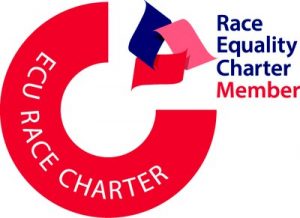I remember a leadership development programme I participated in. We’d been talking about difference, about leading teams made up of people of different temperament, approach, background, heritage, culture. ‘What’s the difference’, asked the facilitator, ‘that makes a difference?’. In one sense, it’s just a clever phrase but Chris Seeley, who lead this discussion, was superb. She was a facilitator with whom it was a pure – if exacting – pleasure to work. She was able to listen hard, reflect back underlying ideas succinctly and thought-provokingly, and then pose an arresting question – such as ‘what’s the difference that makes a difference?’. It was always a question which pushed you just to the edge of where you were comfortable thinking.
On 31 October, my colleague Kevin Kerrigan, who is the University Leadership Team’s race equality champion—as well as Pro Vice-Chancellor for Enterprise and Dean of Sheffield Business School—will be hosting a half-day conference in Hallam Hall formally to launch this university’s commitment to the Race Equality Charter. There are currently forty-eight member institutions and ten award holders of the Race Equality Charter; Sheffield Hallam signed up to the Charter as a member at the beginning of this year and established a race equality steering group to lead work on the Charter.

Our commitment to work towards the Race Equality Charter principles is part of a wider challenge to make equality, diversity and inclusion a central part of the way we work.
We know we have work to do. The make-up of the University’s workforce does not reflect the diversity of our city or region. On our most recent data return, 7.6% of the University’s staff are from a black, Asian and minority ethnic background compared to 16.1% of the working age population of the Sheffield City Region. Our student body is more diverse: in 2016/7, the most recent year for which we have audited figures, 84% of our UK student population is white and 15% are from a black, Asian and minority ethnic background. But even here the figure does not reflect the city region: 21.1% of secondary school pupils in the city region are from a black, Asian and minority ethnic background. Moreover, 69% of white applicants are made offers, but just 54% of black, Asian and minority ethnic background are. There is a gap of eighteen percentage points between the proportions of white and black, Asian and minority ethnic background who secure a first or upper second class degree.
National figures identify another challenge. For staff and students, as careers or study trajectories proceed, inequalities widen. Nationally, whilst 21.3% of first year undergraduates are from a black, Asian and minority ethnic background, the figure is 19.3% of all post-graduate taught students and 16.4% of all post-graduate research students. Just 7.3% of professors are from a black, Asian and minority ethnic background.
Of course, universities do not operate in a vacuum. But the commitment to work towards the Race Equality Charter principles is part of a wider challenge to make equality, diversity and inclusion a central part of the way we work. The Race Equality Charter principles set out five commitments for the University to improve the representation, progression and success of minority ethnic staff and students. First, we acknowledge that racial inequalities are a significant issue within higher education. They are not necessarily over, nor are they isolated. Racism is a facet of our society. Secondly, we understand that higher education cannot realise its full potential unless it can benefit from the talents or all and until individuals from all background can benefit from the opportunities of higher education. Thirdly, in developing solutions to racial inequalities, long-term institutional cultural change is important, rather than falling back on deficit models which require individuals to change. Fourthly, we recognise that minority ethnic staff and students are not a homogenous group. Finally, everyone has multiple identities and the intersections of these identities should be considered.
The launch day on 31 October is important for the University. Changing the way we work, making equalities a central pre-occupation is easy to write or say, but more difficult to achieve. As a very first step, the race equality steering group would like to understand better what working at this university is like; they would like as many staff and students to complete the survey on race equality. The staff survey opened on 15 October and the student survey on 22 October; each is open for four weeks.
Institutions should thrive on difference. It’s difference which makes universities culturally rich places in which to work and to study. But if institutions should thrive on difference, they need to marshal the talents of all so that individuals also thrive on difference. Chris Seeley’s question was not a clever play on words but a question of genius, which works on so many levels. For this university, what is the difference which will make a difference?
Dear Chris,
It was undoubtedly an impressive event yesterday and we have moved leaps and bounds in even tabling Race Equality as an agenda of importance compared to where we were even a few years ago. Yes, as you indicate the challenges for us and the sector are enormous. So in answer to the question, “what is the difference that will make a difference”-put quite simply, the recruitment of people from a BAME background through a process of agreed targets within a 3-4 year period. Merit based recruitment from the Board of Governors through to academic and professional staff. By including a requirement for managers to recruit BAME staff we increase visibility, understanding and breakdown the walls of Jericho which create glass ceilings which restrict creativity. It can and has been done and it makes an irreversible difference. Thanks Sital